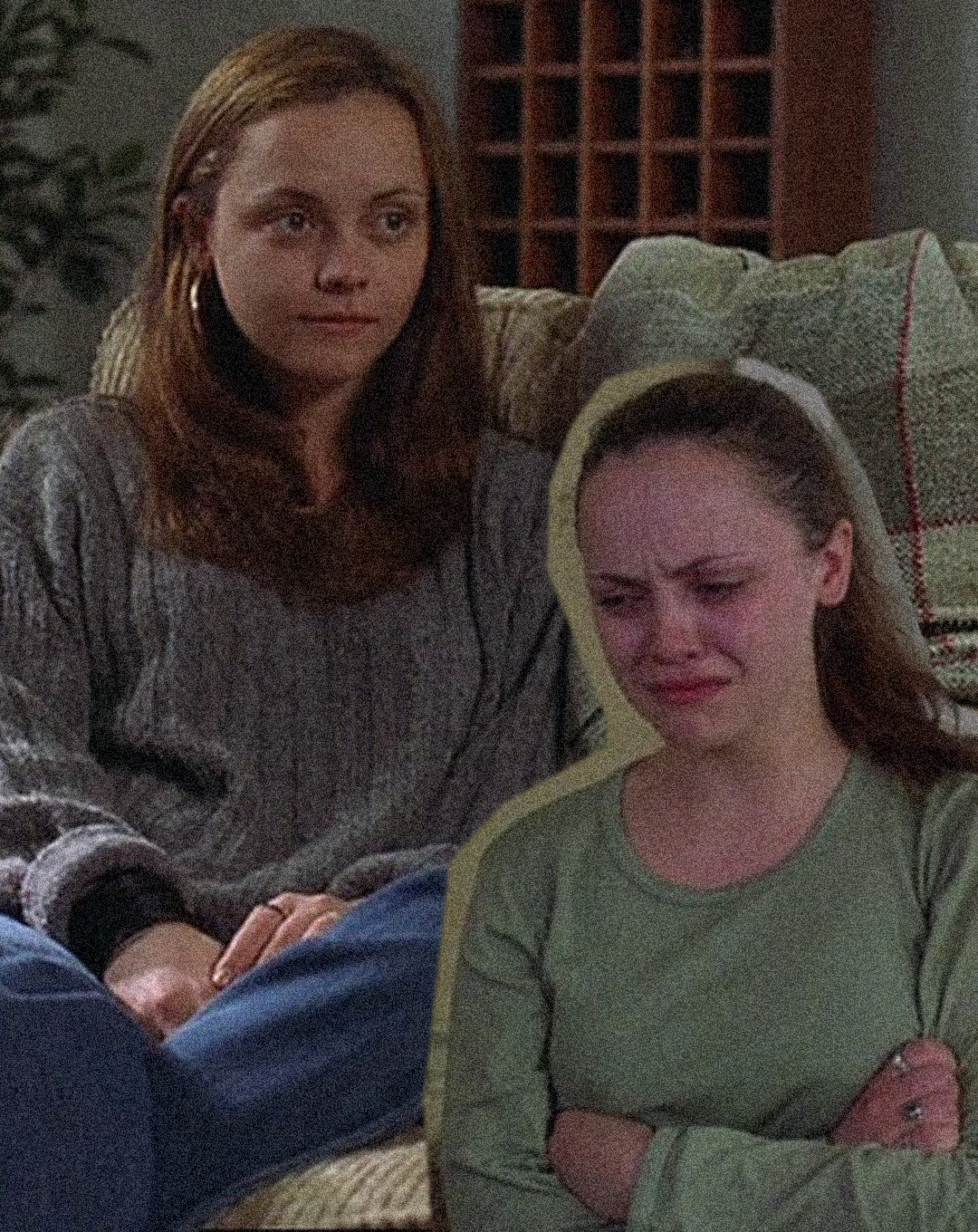Film Fatale: Prozac Nation, Girl, Interrupted and the Sad Girl Legacy
Make it stand out
A pretty twenty something sits on the edge of the bed, her makeup is minimal, her long grown out hair covers part of her solemn yet sweet face. Soft light comes through her large bedroom windows of her parent’s home, she grips the floral bedsheets and takes a deep breath: Will anyone ever understand?
Aged twelve all the way up until present day, I, like many other young women, looked to the TV screen for solace, and flicked through the memoirs of the most notable depictions and real-life experiences of depression from women before I was born for solidarity. Prozac Nation (2001) and Girl, Interrupted (1999) are two staple films in the ‘sad girl’ genre, although ‘sad girl’ seems derivative and dismissive, this label an undoubtable part of the two films’ legacy that still thrives online today, for better or for worse.
Cropped t-shirts with the words Girl, Interrupted, TikToks amassing hundreds of thousands of views of Prozac Nation’s Lizzie going through it (although TikTok blocks the word ‘prozac’, a simple change to ‘pr0zac’ lets you see all the film edits you want), and not to mention endless amounts of girlbloggers crafting their online identity around the ‘sad girl’ aesthetic - these films aren’t leaving the cultural zeitgeist any time soon. As I opened Netflix and saw that Thirteen (2003) was recently added to the platform and was in the top 10 most viewed films that week, I took a deep breath and had a moment's silence for all the teenage girls that will inevitably stumble onto this and never look back.
___STEADY_PAYWALL___
In a New York Times review for Girl, Interrupted fresh after the films release in 1999, Stephen Holden describes protagonist Susanna as a “shrill, whiny pain in the neck”, and if Susanna is shrill, then Prozac Nation’s Lizzie is insufferable. The confessional nature of these films, and especially the books they were based on, created a sub-genre which gives the same effect as reading someone’s diary or listening to a therapy session through the walls of a waiting room. Winona Ryder and Christina Ricci’s performances give us a visceral depiction of frustration, sadness, emptiness, all whilst maintaining the perfect crying face. This is a dangerous game - but it’s difficult to deny that the shots of these women smoking and glaring are a special kind of striking. The onus is on the viewer to maintain enough dissonance from the fiction; to not cut off all their hair and give in to the void alongside these anti heroines.
Pieces of media that so clearly cater to the burning, depressive feelings of confusion and pain whilst making these experiences appealing and entertaining to watch isn’t necessarily a bad thing, but looking back I can see how it influenced my teenage self to lean into my sadness. The ‘romanticisation’ of mental illness can be a controversial subject; some take shelter in the ways media packages pain and some resent how appealing film can make falling into the deep hole of despair seem. I know it would have helped if I watched Girl, Interrupted a little less in high school, but it’s not like these films birth the pain for teenage girls - they simply explore it. Beyond films like Girl, Interrupted and Prozac Nation, the late 90’s to early 2000’s had a particular fascination with women’s sadness. The Hours (2002) directed by Stephen Daldry also comes to mind, and of course Sofia Coppla’s The Virgin Suicides (1999). They focus on a Sylvia Plath type sensibility: smart, beautiful, privileged and yet despite all this they are still broken. The films’ leads evoke a similar feeling to the depictions of women of the Pre-Raphaelite era, swapping flowing green dresses to long sleeve black tees. Female sadness has lasted forever.
“It’s not like these films birth the pain for teenage girls - they simply explore it.”
Prozac Nation is based on the best-selling memoir of the same name by Elizabeth Wurtzel, the film follows Lizzie, a budding journalist who is off to study at Harvard and take the first steps into adulthood. She’s talented: published in Seventeen magazine during highschool, and won an award for her article from Rolling Stone magazine. But talent comes with a price - and that’s the constant chase to out-do yourself. Lizzie becomes obsessed with writing another hit, winning another award, and proving herself as worthy to be a real writer. Montages in the early 2000’s fashion of her writing play out, her eyes get sunken, she rips pages out of her notebook and she’s dragged to see a doctor by her friends.
You soon come to dislike Lizzie, and this is why I think this film stands out against the rest of the depressed young adult genre. The way she treats her friends is horrendous with flippant remarks about their lack of intelligence while she is sleeping with her bff roommate's boyfriend, all whilst defending herself with self pitying and manipulative rhetoric. She gets drunk and messy - and although she still maintains her tragic beauty, she becomes ugly. Her 90’s chic style aside, I don’t think anyone would watch this and want to scream out (or comment) ‘literally me!”
The film plays out a brutal honesty, one that’s uncomfortable to watch because you see specific behaviours that play out whilst in a deep state of depression, behaviours that are much more complex than crying, sleeping and self loathing. This is an obvious reason why the memoir became a bestseller and resonates so well with Gen X, it’s a brutally honest portrayal of how empty mental illness can make you become. As Lizzie’s roommate Michelle tells her: “I'm not crying because you're mean. I just can't imagine how incredibly painful it must be to be you.”
Words: Charlotte Amy Landrum


